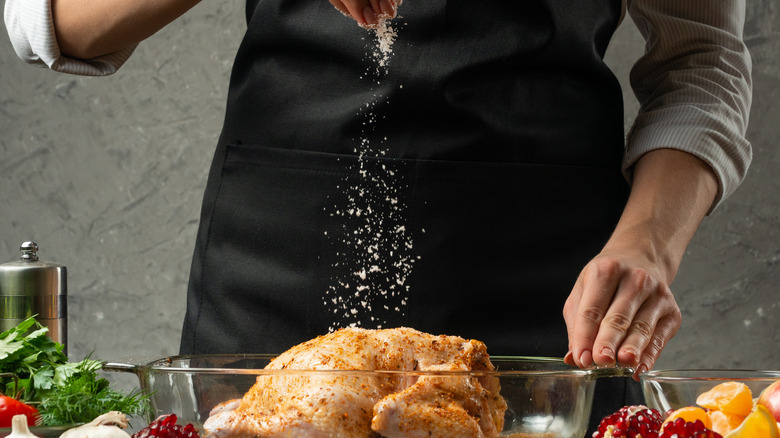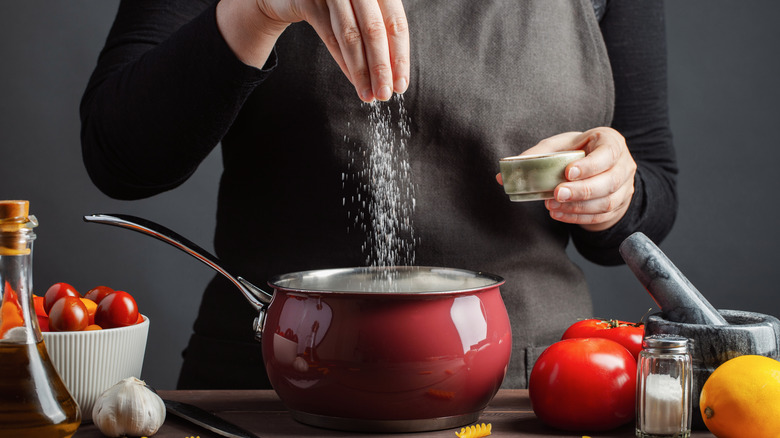Here's Why Chefs Season Food From So High Up
Adding the right amount of salt to almost any kind of food, be it pasta, vegetables, meat, or even sauces, requires far more attention than you might think. Over-seasoned food can be nearly inedible, while adding too little seasoning leaves you with a bland dish.
Chefs follow several different methods to ensure their food is well-seasoned. While some practices are better known, like gradually adding salt throughout the cooking process, chefs utilize far more unfamiliar techniques. According to Buzzfeed, salting your food when cooking brings out the food's natural flavors, but your salting frequency should depend on whether a dish is hot or cold. If you are preparing a hot dish, you might need to salt the food more than once during the cooking process; Cold dishes likely only need to be seasoned once. Other seasoning techniques involve knowing which herbs, spices, and other seasonings to use to bring out the desired flavor. But one of the most common (and strangest looking) seasoning techniques you might see chefs using is sprinkling salt from far above the food. This method might confuse home cooks, but trust us when we say that chefs employ this method for a good reason.
The extra height ensures even distribution
It might seem like chefs are just showing off or adding a little extra showmanship to their cooking presentations, but the added space between their hands and the pot or pan serves a purpose. As it turns out, this method functions to spread the seasoning as evenly as possible (via Buzzfeed). When chefs allow the salt to fall from farther away, the dish is more uniformly seasoned. Seasoning from an elevated position can also improve how your food cooks, because you don't have to stir as much to distribute the seasoning, shares The Kitchn.
This concept is all about allowing the individual salt crystals the time and distance to fall and settle across a larger area rather than in a small, concentrated spot. Imagine holding two handfuls of rocks or gravel. If you hold one hand just two or three inches above the ground, those rocks are more likely to fall directly under the hand that released them. If you release the other handful of rocks from a fully standing position, they will naturally fall across a wider surface area. They could even bounce or roll further across the ground when they finally make contact. It's a similar process with salt, but on a smaller scale.
Whether you use your hand or a measuring spoon, The Kitchn recommends you season from about 12 inches above your dish to get the best results.

